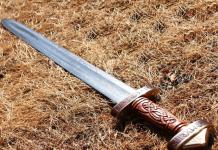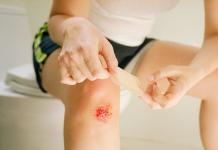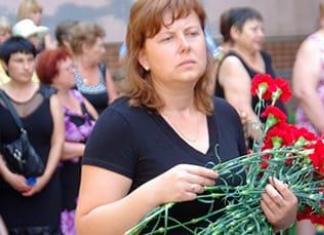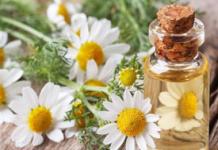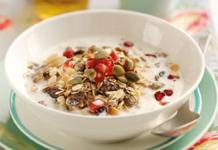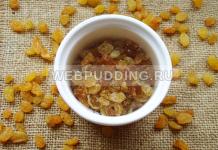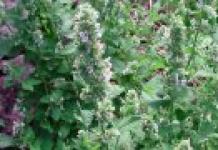- skin diseases (eczema, dermatitis, etc.);
- helminthic invasions;
- hypertensive syndrome;
- inflammatory processes affecting the bladder;
- colds, accompanied by high fever;
- insufficient production of breast milk;
- puffiness;
- elevated temperature.
Goat's rue, also known by such names as goat grass, rutovka, medicinal galega, is a perennial plant, the seeds and grass of which have healing properties. Galega will help to cope with many diseases, but most often the collection is used for diabetes treatment.
Beneficial features
Goat's rue increases glucose tolerance, activates slow metabolism, tones smooth muscles.
Compound
Goat's rue grass is a 100% natural product. Its chemical composition contains:
- carotene;
- tannins;
- bitterness;
- tannin;
- galegin alkaloid;
- vitamins;
- glycosides;
- organic acids.
Goat's rue against diabetes
Goat grass is indispensable in the treatment of diabetes, it can significantly lower blood sugar levels, remove excess cholesterol, and speed up metabolic processes. Thanks to the intake of goat's rue, the movement of blood, lymph and other fluids is accelerated, a supply of glycogen in the body is created, and sensitivity to glucose increases.
With diabetes, it is also necessary to buy and take Galega officinalis in order to improve the condition of the vessels and strengthen the internal muscles. Brewed goat's rue infusion should be drunk 1-2 tablespoons 3-4 times a day. The maximum course of treatment with the collection is 1 month, after which a break is required.
Galega officinalis for lactation
Goat's rue herb has a pronounced lactogenic effect. Goat grass improves the circulation of all fluids in the body, stimulates the intensive production of breast milk. To enhance lactation, it is enough to take one tablespoon of freshly brewed infusion three times in a knock.
goat's rue herb for weight loss
Goat grass has a diuretic, mild fat-burning effect, and can significantly lower blood sugar. You can use goat's rue infusion if you follow a strict diet. The plant will have an auxiliary effect in the fight against extra pounds. The course of taking galega for weight loss is 2-3 weeks.
Application methods
Useful decoctions and infusions can be prepared from goat grass:
- Pour one teaspoon of dried goat's rue into a glass of boiling water, cover the container, let the drink brew for about one hour. Strained infusion should be taken three times a day for 1-2 tablespoons. It is not recommended to exceed a single dose of a medicinal agent.
- Two tablespoons of galega officinalis must be poured with boiling water (the volume of liquid is 0.5 liters). Put the solution to languish for 15 minutes in a water bath. Then strain, add boiled water to it to bring the final amount of liquid to the original. It is recommended to use a healing agent in small doses (1/4 cup each) 2-3 times a day before meals. After 2-3 weeks of taking goat's rue, you need to take a break.
Contraindications
It is forbidden to take Galega officinalis for pregnant women, people suffering from hypertension, frequent constipation, allergy sufferers who have an individual intolerance to this herbal product.
Goat's rue is not recommended for exacerbation of any chronic gastrointestinal diseases. Galega is considered a poisonous herb, therefore, it is necessary to strictly and accurately observe its dosage and not increase the number of recommended doses. If the dose is exceeded, severe headaches, attacks of nausea, and vomiting may occur. With such symptoms, it is necessary to immediately wash the stomach.
Where to buy goat's rue?
Our online store "Russian Roots" offers a wide selection of medicinal plants and herbal preparations, among which there is Galega. Ordering goods on the site is not difficult. The paid order will be sent by mail to the regions of Russia. The courier service will deliver purchases to residents of Moscow and the nearest suburbs. You can also buy goat's rue in Moscow at a bargain price in one of our branded phyto-pharmacies. Send us your feedback about the purchased products!
Instructions for use:
Galega is a perennial herbaceous plant belonging to the legume family.
Description of Galega officinalis
The plant, from 40 cm to 2.5 m high, has a tap root. Stems erect, numerous, branched. The leaves are petiolate, pinnate, with stipules, with 5-10 pairs of linear-lanceolate leaves, and pointed at the top.
The flowers are most often light blue in color, numerous, with long pedicels, collected in dense axillary racemes. Corolla light blue or pale purple, moth-like. The calyx is bell-shaped. The plant produces multi-seeded fruits, erect beans 2 to 4 cm long. Seeds are smooth, kidney-shaped, greenish-yellow in color.
The plant grows in Ukraine (Crimea, Dnieper region, Carpathians), in the Caucasus, in Moldova and in the European part of Russia (Black Sea, Nizhnevolzhsky regions).
It grows on the banks and valleys of rivers, along roads, among shrubs, in steppes and mountainous areas, on the edges, in beech, in subtropical moist forests.
For medicinal purposes, the seeds and grass of the plant (flowers, leaves, stems) are used.
The chemical composition of Galega officinalis
The plant contains alkaloids, saponins and other nitrogen-containing compounds: 4-hydroxygalegin, galegin.
Galega roots contain triterpenoids.
In the grass of the plant, alkaloids, carbohydrates, peganin, vasicinon and other nitrogen-containing compounds were found: tannins, kaempferol, pipecolic acid, ascorbic acid, rutin, flavonoids, quercetin, carotene, bitter substances, galegin, tannin, phenolcarboxylic acids and their derivatives in the hydrolyzate (p-coumarin, coffee, ferulic, synapic).
The seeds of the plant contain sucrose, steroids, stachyose, alkaloids, saponins and other nitrogen-containing compounds, fatty oil, as well as acids: stearic, linolenic, linoleic, palmitic.
The use of galega officinalis
 The action of galegin in scientific medicine has been studied. When injected into a vein, it causes an increase in blood pressure. When applied topically, it constricts the pupils. Galegin constricts blood vessels, inhibits intestinal motility and enhances the secretion of breast milk.
The action of galegin in scientific medicine has been studied. When injected into a vein, it causes an increase in blood pressure. When applied topically, it constricts the pupils. Galegin constricts blood vessels, inhibits intestinal motility and enhances the secretion of breast milk.
Galegin is used in the treatment of diabetes as an adjunct to insulin treatment, which makes it possible to reduce its dosage. Infusions from galega seeds are used for the same purposes.
Galega preparations have a diuretic and diaphoretic effect. In parturient women, milk secretion is increased.
In folk medicine, decoctions and infusions of galega officinalis are used in diabetes mellitus, and also as an anthelmintic agent.
Galega officinalis - honey plant
Galega has long been recognized as the best honey plant. This plant is capable of producing as much nectar as sainfoin. The plant blooms with white acacia - in mid-May. Flowering continues for a month. From one hectare bees collect about 200 kg of nectar. It is much easier for bees to pollinate this plant, since there is no tripling in it, which allows the bees to collect nectar without pinching the proboscis.
After the end of flowering, the grass must be mowed, then the plant will bloom in August and will bloom until mid-September.
Galega officinalis contraindications
Galega preparations should be used with caution. Their long-term use causes an increase in blood pressure and may impair bowel function.
An increase in blood sugar provokes not only a diseased pancreas, but also constant stress or a panic attack. And not always these bursts need to be treated with medication. Galega herb, which has long been used to treat mild forms of diabetes, will help bring sugar levels back to normal.
Compound
Galega is a large herbaceous perennial of the legume family. The taproot penetrates to a depth of 90 cm, and numerous branched shoots grow in height by the same amount. Numerous leaves with a pointed apex reach a length of 20 cm and do not fall off even after complete drying. From June to August, the galega blooms with long racemose inflorescences with small light blue flowers. In August-September, fruits ripen - multi-seeded beans up to 12 cm long.
Galega grows in the southern parts of Europe and Western Asia, is grown as a medicinal plant in summer cottages in a temperate European climate. Other names: goat's rue, goat's rue, French lilac, forest licorice.
Apical shoots together with flowers and ripened seeds are considered medicinal raw materials. In the composition of the prepared raw materials found:
- alkaloids galegin and peganin;
- saponins;
- nitrogen-containing compounds;
- carbohydrates;
- tannins and bitter substances;
- kaempferol;
- vitamin C;
- routine;
- flavonoids;
- quercetin;
- phenolcarboxylic acids and their derivatives.

In the seeds of the galega, the concentration of these substances is less than in the shoots. But beans additionally found steroids, sucrose, fatty oils, as well as stearic, linoleic, palmitic acids.
The presence of alkaloids in the composition of the plant makes it toxic and hazardous to health. Therefore, treatment can only be carried out under the supervision of a doctor.
Useful properties of the plant
The alkaloid galenin has been well studied. Its properties have been scientifically proven to increase blood pressure, constrict peripheral vessels, and weaken intestinal motility. When instilled into the eyes, the alkaloid causes constriction of the pupil. Another alkaloid, peganine, enhances intestinal motility, has a choleretic and mild laxative effect.
But most of all, the medicinal properties of galega grass in the treatment of diabetes are known. Plant-based preparations lower blood sugar levels, increase the body's tolerance to glucose, and reduce insulin dependence in type II diabetes.

Galega is still considered to be not fully studied. Scientists are considering the possibility of a plant to have an effect on the body:
- diuretic;
- lactogenic;
- anthelmintic;
- anti-inflammatory;
- antimicrobial;
- restorative;
- diaphoretic.
It is believed that in the early stages of diabetes, herbal decoctions can partially replace insulin.

The use of herb galega officinalis in folk medicine
Galega is not recognized by official medicine. But it is approved as a raw material for the manufacture of various biological additives. Due to the ability of goat's rue components to reduce and regulate blood sugar levels and improve metabolism, in folk medicine it is most often used in the treatment of diabetes.
Alcohol tinctures, herbal infusions and decoctions are prepared for oral administration in diabetes mellitus. You can also dissolve powdered seeds and dried herbs in water. Although the recipes for their preparation are simple, it is worth coordinating the dosage, concentration and course of administration with your doctor. As in insulin treatment, the doctor paints all the parameters based on the severity of the disease, concomitant diseases, the age of the person and other indicators. Given the toxicity of the plant, it is imperative to consult a doctor.

In different concentrations, herbal preparations and plant seeds are prescribed for:
- edema of various origins;
- metabolic disorders;
- disruption of the endocrine system and ovaries;
- slagging of the body;
- reduced lactation in nursing mothers;
- high fever during a cold;
- renal pathologies and infections;
- hemorrhoids;
- reduced pressure;
- worms.
Galega can be used alone, in combination with other herbs, and combined with products:
- aromatherapy helps with the correction of diabetes;
- when preparing infusions, it is useful to add blueberry leaves or;
- does not contain sucrose, therefore it is one of the most useful products. permitted and recommended for use in diabetic patients.

Contraindications for use
First of all, you need to remember the toxicity of the plant and do not take drugs without the consent of your doctor. In addition to the list of medicinal properties, Galega grass has a number of contraindications.
Among them:
- pregnancy;
- hypertension;
- age up to 12 years;
- allergy and intolerance to components.
Long-term use of goat's rue disrupts the intestinal microflora, so you need to adjust the daily diet, taking into account this feature.
Useful information about the plant
Galega is a wonderful honey plant, and just a beautiful and unpretentious plant. It is often planted in home gardens and summer cottages for landscaping and collecting medicinal raw materials. The frost-resistant plant is able to survive any winter of a temperate strip, and annually pleases gardeners with abundant flowering. In addition, the root system enriches the soil with nitrogen, and the flowers attract many insects and bees to the site. Galega grown in the garden completely retains its healing qualities, and is suitable for harvesting raw materials.

Some varieties of goat's rue contain low doses of alkaloids and are considered a valuable fodder plant. Moreover, the harvest can be harvested for 10-15 years in a row from one site, which makes harvesting economically viable. Harvested raw materials are used to feed all kinds of domestic animals and poultry.
How to collect, dry and store
Goat's rue shoots are harvested during the flowering period. To do this, in July-August, apical shoots no longer than 20 cm long are cut off. In order for the grass to recover, several intact shoots must be left on each bush. You can dry it in the open air and in special dryers until the moment when the shoots stop bending, but break with a slight crack. Store in paper bags for up to 1 year.

Goat's rue seeds are harvested fully ripe. The beans are dried in the sun, threshed and sifted through grates.
Perhaps you have already used decoctions and infusions of galega herbs, and were convinced of their medicinal properties? Share in the comments, we will be grateful.
Name in Latin: Galega officinalis
Synonyms: goat's rue
Galega is a perennial herb from the legume family, which has an anti-inflammatory, diuretic, tonic, antimicrobial effect on the body.
The plant has a weakly branched, taproot, branched, straight stems. The leaves are alternate, with 4-10 pairs of leaflets. Galega flowers are blue or light purple (rarely white), located in the axils of the leaves, collected in dense brushes up to 25 centimeters long.
Galega blooms all summer, the fruits ripen in late summer, early autumn. The fruits are beans up to 4 centimeters long. Seeds are smooth, yellow-green, reniform. Propagated vegetatively and by seeds. Is a honey plant.
Galega grows along streams, rivers, near swamps, in thickets of shrubs, in meadows, in damp ditches and pits. The plant can be found in the Crimea, Moldova, the Carpathians, in the European part of the Russian Federation, in the Caucasus.
The name of the plant from ancient Greek is translated as "expelling milk." Initially, peasants used this herb to increase lactation in goats, hence the second name of the plant - goat's rue.
Galega was first used for medical purposes in the Middle Ages. European herbalists used the plant as a lactogenic, diuretic, diaphoretic. At the beginning of the 20th century, diabetes began to be treated with the help of galega.
Procurement and storage
For medicinal purposes, the entire aerial part of the plant is used. Galega harvesting begins from the beginning of flowering, cutting off the tops of the plant up to 20 centimeters long. From the beginning of June, the collection of seeds begins.
Galega grass is dried in the open air, under a canopy. Raw materials are considered ready when the stems begin to break. The finished product is stored in a closed container. The shelf life is 12 months. After this period, the plant begins to rapidly lose its beneficial properties.
The seeds are dried right in the beans, in the sun. Dried beans are poured into bags and threshed with sticks, after which they are sifted through grates.
Chemical composition
Galega grass contains:
- carbohydrates
- carotene
- phenolcarboxylic acids
- tannin
The composition of galega seeds includes:
- sucrose
- steroids
- alkaloids
- saponins
The flowers contain many flavonoids.
Application in medicine
Galega is not used in official medicine, but is included in many dietary supplements. In folk medicine, galega is used to treat mild forms of diabetes. The plant has a diuretic, anti-inflammatory, antimicrobial, diaphoretic effect.
Aerial parts of the plant are used to enhance lactation, galega-based preparations have a general strengthening effect on the body. In addition, galega is used as part of the complex therapy of hypotension, fever.
A decoction of a mixture of grass and plant seeds is used as an anthelmintic. An alcoholic infusion of goat's rue is used to improve the functioning of the heart, and also as a general tonic.
Externally, a decoction of galega together with other medicinal plants is used to treat dermatological diseases. Inflamed wounds and trophic ulcers are treated with fresh plant juice. In homeopathy, galega is used in the treatment of diabetes and hemorrhoids.
Contraindications
You should not take herbal remedies if you have the following contraindications:
- individual intolerance
Important! When taking funds based on galega, it is necessary to strictly observe the recommended dosages and frequency of administration. In case of an overdose, intestinal function is disrupted, blood pressure may increase. With prolonged use, the intestinal microflora is disturbed, therefore, after the end of treatment, it must be restored with the help of special medicines.
Recipes
information is absent.
Thank you for your very prompt response. After reading your letter, I also read a book on the keto diet. To be frank, it did not arouse enthusiasm in me due to the fact that I myself adhere to the charter of the Orthodox Church (including nutrition). It’s also difficult for me with lard because I had hepatitis A in early childhood, and in general fat is a nightmare for me (it gets worse even when I see food just floating in fat). There is simply no question of any gradual increase in nutrition, because. there is a strict rule that cannot be adjusted. I can drink a small glass of village milk and that's it. Or spread butter very thinly on a thick piece of bread (sometimes you want to feel the creamy taste). This is me to the fact that I doubt very much that the keto diet can be used by everyone.
It's been a year since I started following Marva Oganyan's advice and unloading myself. True, after fasting, I gradually return back to our traditional diet. All the same, I want hot food and just a toasted crust of bread. But the further you go, the easier it is to break away. The state simply changes before our eyes for the better, and no costs are required at all. Maybe I still don’t know something and something unknown will be revealed later, but the pressure returned to normal the next day. Those. you can work and live at your own pace. Strength and vigor increased noticeably. I never thought that when I became a pensioner, I would cope with household chores much faster than in my youth. It is a fact.
But this is not about me (forgive me for taking up a lot of space with a story about myself). People close to me are still studying the book. While they are doing this, I decided to ask you one more thing. Is it possible for my brother to jump from pills to herbs at least partially, which is possible in his position? Sugar tablets are kept at 7-8 (was 12). Is there anything that can be done to clear the blood vessels? We will act with baths from the outside, and with herbs from the inside? I understand that doctors have a duty to treat according to approved regimens, even if they don't like them. Therefore, it is simply useless to ask something unconventional from a doctor. He does not dare to join the methods of treatment that I use for myself, and probably, and rightly so, this is not for him. Although if it is very tight, then it can be decided. But will it do any good? How not to harm.
He has a device, and he actively used it. Stopped after a stroke. The doctors said that it was very likely that the clot had come off as a result of the impact of the apparatus. In general, he can only walk. While still walking only around the apartment, unfortunately. We will try to implement the rest of the recommendations. The daughter-in-law undertook to read Zalmanov for the time being, and then J. Mercola. And lard is really now very actively promoted both on TV and on the Internet.
Thank you for being you and Staroslav in general. My brother and I were born in Novosibirsk, but we traveled a lot with my father around our vast country until we settled, he is in Nizhny Novgorod, and I am in the region. Who would have thought that we would turn for help to where we once felt very good! They left with tears and dreamed of returning, but it was not destined ...
Health to you and your loved ones, Staroslav - prosperity. All the best!
Answer:
It's nice to meet fellow countrymen, it's even nicer to give them all possible help!
According to the latest data from advanced science, diabetics are strongly discouraged from completely leaving the base drug (Metmorphine).
Galega officinalis grass is known to many people suffering from such a formidable disease as diabetes mellitus. For those who have never heard of this plant, we will talk about its use in traditional medicine, its beneficial properties and contraindications.
Description
Galega officnalis is a perennial shrub from the legume family. This is a beautifully flowering powerful, multi-stemmed plant, about one and a half meters high. A bush can have up to twenty stems. They are erect, tubular, hollow inside, painted green.

The leaves are large, pinnate, petiolate, with stipules. Their length can reach twenty-five centimeters. Castings consist of fifteen pairs of leaflets, oval elongated. They are slightly pointed towards the top.
Galega officinalis blooms from early summer to mid-autumn. The flowers are light purple or pale blue, large, with long pedicels, resembling bells in shape. They form erect inflorescences-brushes up to twenty centimeters long.

The root system of the plant is pivotal, powerful. The length of the root sometimes exceeds eighty centimeters, while having numerous horizontal processes, from which new shoots appear.
After flowering, Galega officinalis forms fruits - erect beans, having from five to eight kidney-shaped, smooth seeds of a yellowish-green color, hard to the touch. Full ripening of fruits occurs in September.
Usage
For medicinal purposes, all parts of the plant (leaves, flowers, roots) are used, despite the fact that Galega officinalis (goat's rue) is a poisonous plant. It is important to know and follow the dosage of drugs based on this herb.
Spreading
The Galega officinalis plant is thermophilic, so it can often be found in Ukraine, Moldova and the southern regions of Russia. It grows along roadsides, in meadows, forest edges, in mountain steppes, along river banks.
Procurement and storage of raw materials
Plants collected along the roads are unsuitable for the manufacture of medicines. Raw materials are harvested during flowering, carefully cutting the stems with a sharp knife. The most commonly used flowers and the upper part of the stem. Select only fresh green stems of the plant.
Cut them into small pieces immediately after harvesting. Drying is done in the shade, with good ventilation (under a canopy or in the attic). For storage, bags made of natural fabric or paper are suitable. The storage period should not exceed one year. After this period, the herb loses its healing properties.

The fruits are harvested at different times as they ripen. They are peeled, the seeds are dried in the shade. Shelf life - twenty-four months. The roots are well cleaned and washed with running water and cut into small pieces. The roots should be dried in the shade, under a canopy, but it is better during the shelf life - no more than two years.
Medicine known since antiquity
Galega officinalis has been used as a healing agent since ancient times. At first, the ability of the plant to increase lactation was noticed. It began to be used by adding it to livestock feed to increase milk yield. The plant received its second name - goat's rue - for the same reason.
After some time, the diuretic, diaphoretic properties of the herb were revealed, which allowed folk healers to widely use it in their practice.

Chemical composition
Today Galega officinalis is already quite well studied. It consists of:
- alkaloids;
- triterpenoids;
- peganine;
- carbohydrates;
- vasicinon;
- pipecolic and ascorbic acids;
- flavonoids;
- routine;
- carotene;
- bitterness;
- phenolcarboxylic acids.
The seeds of the plant contain:
- steroids;
- sucrose;
- stachyosis;
- alkaloids;
- saponins;
- stearic, palmitic, linoleic acids.
Galega officinalis: application
Traditional medicine does not use this herb, and traditional healers use it quite successfully as an antihelminthic, diaphoretic. Galega gives a good result when used as a means for lactation during breastfeeding. It improves the movement of fluid and, as a result, the production of breast milk.
Galega for diabetes
Undoubtedly, galega cannot completely replace drugs for the treatment of such a serious disease, and it is not worth experimenting with drug treatment.
But as an aid, the herb of galega officinalis in diabetes mellitus is used quite successfully. The plant is effective in the initial stages of type 2 diabetes, when insulin has not yet been used. In diabetes, not only the hypoglycemic effect of galega, that is, the ability to lower blood sugar levels, is useful. It increases the susceptibility of internal tissues to glucose. As a result, sharp jumps in blood sugar are excluded.

The plant Galega officinalis helps in another important process in the body of a diabetic. As you know, the liver has a store of glucose - glycogen. If there is not enough energy and there is nowhere to take it from, then hidden reserves come to the rescue. It is these invaluable reserves that galega helps to create in diabetes. In addition, galega officinalis tones smooth muscles. It helps strengthen blood vessels and remove bad cholesterol.
Food supplement
To enhance the effect of drug therapy and disease prevention, doctors often recommend the use of biologically active supplements based on galega. They are a source of tannins and flavonoids, which have anti-sclerotic and vascular-strengthening effects on the body, and are an effective tool that normalizes glucose levels in diabetes.
These supplements include:
- burdock root;
- nettle;
- dandelion root;
- dried carrots, fructose, wild rose.
Who benefits from these supplements?

Recipes for preparing preparations from galega. Decoction
Pour two tablespoons (tablespoons) of dry chopped grass with 500 ml of water. Boil the resulting composition in an enamel pan for twenty minutes. Strain through a sieve, add boiled water to a volume of 500 ml. Drink the decoction should be 1/2 cup before meals. After the first application, check the blood for sugar - the dosage may be reduced or increased.
Herbal decoction
You will need 25 grams of galega grass, bean pods, nettle leaves and dandelion root. Pour 250 ml of boiling water over the herb and let it brew for 30 minutes. Take two tablespoons (tablespoons) three times a day.
diuretic decoction
Plant seeds are used (10 grams). They are poured with one glass of water and boiled for five minutes. Take 1/2 cup twice a day.

Juice use
The fresh juice of the plant is used as an antiseptic. They can wash ulcers and wounds, rinse the throat or mouth. To do this, squeeze juice from fresh grass, dilute it with water by one third.
Contraindications
As you can see, galega officinalis has many useful properties. She also has contraindications. Herbalists warn that the herb has poisonous properties. Therefore, any treatment must begin with a visit to the doctor, who will find out if you can take drugs based on it, prescribe the desired dosage.

Breastfeeding mothers taking galega should be especially careful to improve lactation. An overdose can lead to the ingress of harmful substances into the milk, which will affect the health of the baby. The main contraindications of galega include:
- pregnancy;
- hypotension and hypertension;
- individual intolerance.
When treating with galega, it should be borne in mind that it can disrupt the intestinal microflora. Therefore, to restore it, you may need a health course after the end of treatment.
Application in other areas
Galega has long been recognized as an excellent honey plant. This plant produces the same amount of nectar as sainfoin. From one hectare of galega, bees collect about two hundred kilograms of nectar. In addition to being a medicinal plant, an excellent honey plant, a valuable fodder crop, galega can be used as food. In the Caucasus, this plant is used as a seasoning. Salads with young leaves of the plant are useful for nursing mothers.



